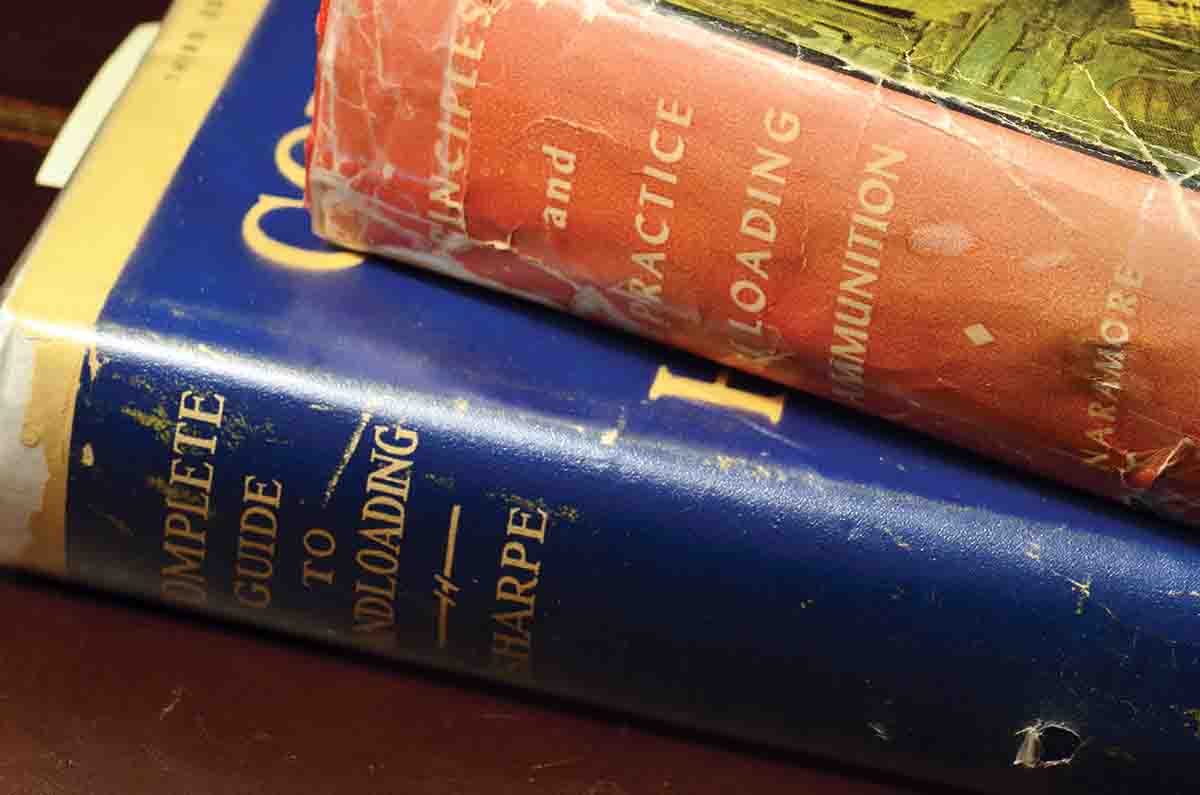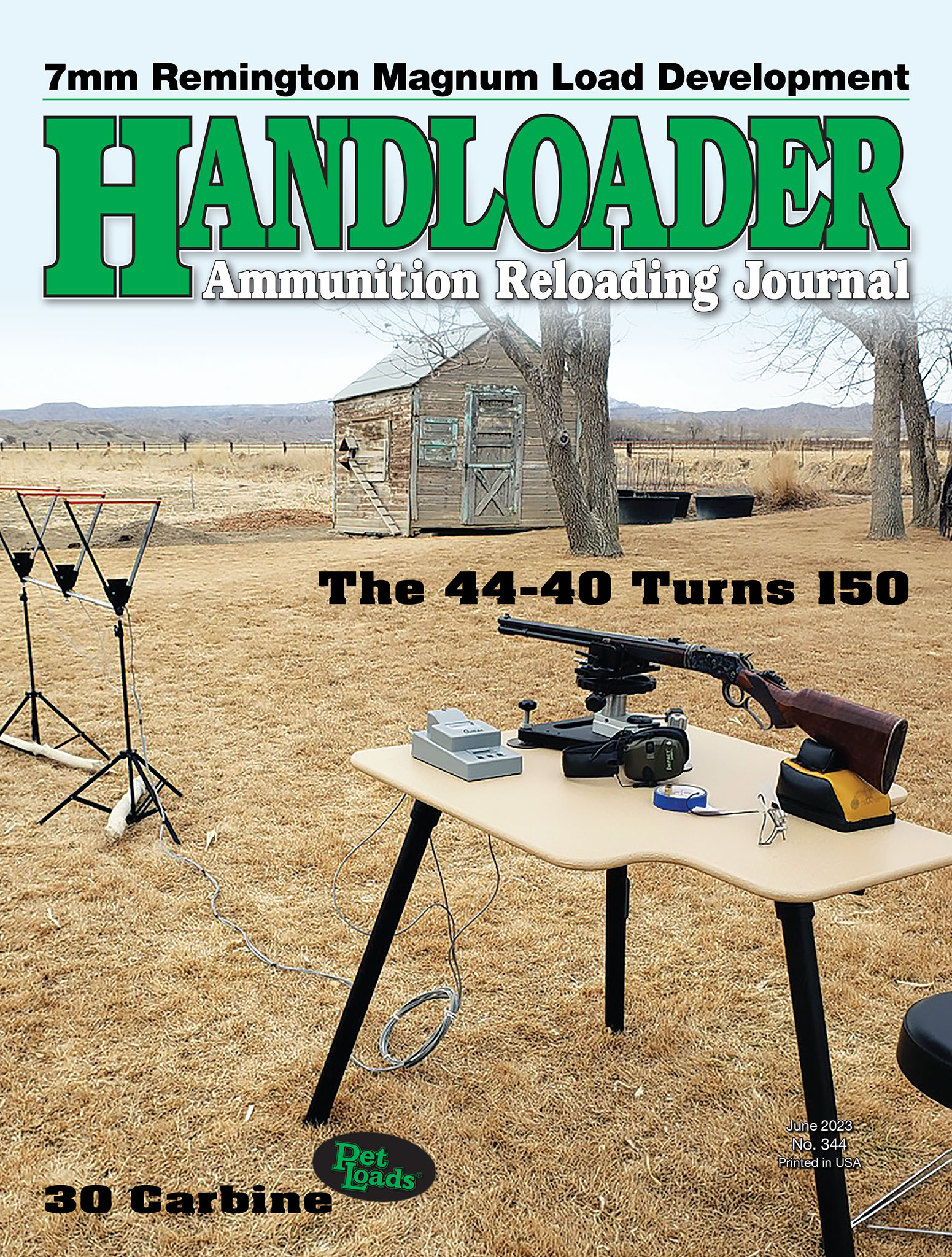In Range
The (Almost) Forgotten Guru
column By: Terry Wieland | June, 23

“There’s stuff in there you won’t find anywhere else,” Bob told me.
“Even in Sharpe?”
“Especially in Sharpe,” he retorted. (Bob was not a big fan of Philip B. Sharpe, although he acknowledged that Complete Guide to Handloading contained a great deal of invaluable information.)
“Naramore,” he said, “Approaches it from a completely different direction. And he knows what he’s talking about.”
When I got home, I duly searched online, found a copy of Naramore for little more than pennies, the shipping cost more than the book itself, although, at almost 4 pounds and 952 pages, that should not be surprising – and it was soon on its way.
At this point, a little background is in order.
Handloading has been with us since the very first self-contained cartridges were developed, and it is not exactly a black science. Buffalo hunters on the windswept prairie cast lead bullets and reloaded their black powder cartridges as a matter of course. Handloading with smokeless powders, however, was something else entirely. Pressures were much higher, measurements more critical, and the penalty for ignoring either could be fatal, to a rifle if not to the shooter.
In 1937, Philip B. Sharpe published the first edition of his classic Complete Guide to Handloading, and over the course of the next 16 years it was updated, expanded, and reprinted in one edition after another. Sometimes the text was revised, but more often, a supplement was included, often with its own page numbering and index. Confusing? That’s putting it mildly. I started with one of the earlier editions and progressed toward the last and largest a step at a time. This was before the internet, and it meant haunting used-book shops and studying lists put out by dealers.
Eventually, I ended up with the third edition, second revision with supplement, dated 1953.
Having written, and later revised, expanded, and republished books myself, I know how difficult it is to go back and do that work, and given the complexity of his subject matter, I don’t blame Sharpe for his approach. It can, however, cause problems. For example, in one section of that book, Sharpe gives loading data for the 22 Hornet, and in the supplement includes a warning against using old data because in the meantime (1950, approximately), the manufacturers had redesigned the Hornet case and given it thicker walls. This increased the strength but reduced capacity, causing higher pressures – sometimes much higher – with old loads that were safe enough when they were published, but no longer were. Ask me how I know this.
In 1954, Naramore’s book was published by Samworth, the highly-respected small arms publishing company that produced technical works more mainstream publishers might have rejected. When I saw the copyright date, I immediately wondered why Naramore would go to all that trouble, given the fact that Sharpe’s work had been around for 15 years and was considered comprehensive by most handloaders.
The answer lay, as Bob Hayley had told me, in Naramore’s different approach to even parallel subject matter.
Philip B. Sharpe was a self-taught ballistician, as far as I can tell, whereas Naramore was a professional who had spent years working with U.S. government departments testing and proving ammunition, from pistol rounds to artillery shells. Not only did he have the technical knowledge, he had the discipline to lay it all out in a clear, logical and organized manner.
Elsewhere in this issue, I write about primer problems experienced with the 357 Maximum in a rebarreled Stevens rifle. Looking in Naramore’s table of contents, under “Interchangeability of Primers,” I found a subhead, “Pierced Primers.” Turning to page 144, I found exactly what I was looking for, including photographs.
Or another example: Naramore includes the best explanation I’ve ever seen as to exactly why cartridge cases stick in chambers – the technical metallurgical explanation – and why differences in expansion characteristics between steel and brass cause different reactions.
Since Naramore’s book came out, a vast amount of handloading information has been published in book form, both hard and softcover, annuals like the old Handloader’s Digest, and of course, this magazine, dating back to 1966. Plus, with authors like Dean Grennell, Ken Waters, and Bob Hagel, there is no question of its value.
If I recall correctly, I started reading the annual Handloader’s Digest sometime in the 1970s and had been a devoted peruser of handloading manuals (Lyman, Speer, et al.) for years before that. I have lost count of the number of manuals now put out by bullet and powder manufacturers and all of them include sections on what to do and what not to do.
This is all very well, but here’s the problem: When I encountered the above mentioned pierced-primer question, I knew I’d read a detailed article on how to interpret primer indentations years ago, and again several times since, but I could not put my finger on the exact volume of whatever it was that included it.
To the best of my knowledge, no one has ever compiled an encyclopedia of handloading, where you could simply look up “primers, pierced” or “primers, rifle and pistol, the differences thereof” and get exactly the information you need at that moment.
Yeah, yeah, I know: What about the internet? Well, I just Googled “pierced primers” and got 23,800,000 results in .44 seconds. I checked the top 10 and found several websites, a couple of forum questions and answers, and one hit where an interlocutor had accidentally punched a hole in a can of paint primer and was wondering if it would still be any good.
It’s one thing to ask a question and quite another to trust the answer, especially if it’s posted by some guy going by the name of “Sizzling Slugs” or “Redhot223.” (I confess – I made those up. But you get the idea.)
On a related note, Phil Sharpe & Co. were noted for playing in the upper ends of the pressure curves, and I long ago learned to take his suggested loads and back them off a good 10 to 15 percent, as well as double-checking them against any other known data before stuffing them into one of my treasured rifles, old or new. Generally speaking, data does not improve with age. Things change. Brass gets roomier or less so. New-production powders may have a different burn rate. New primers may ignite old powders, such as Unique, differently than the primers did in 1935, or even in 1965.
Broadly speaking, however, the kind of information Naramore included in his book never goes out of date and much of it cannot be found anywhere in modern manuals. In most cases, this is because there is simply not enough space, the flow of new information is never-ending, and the companies feel it’s more important to add new loads with new powders for new cartridges than to hammer on about interchangeability of primers, or differences in case capacity from then to now.
Just for fun, I Googled Naramore again, and found two copies of his book for sale: One was asking $225, the other $428.95! Sharpe can be found for a lot less, but it depends on which edition; as well, parts of his treatise were reprinted years ago, so relative value is not clear-cut.
I’m glad I bought Sharpe when I did, and really glad I bought Naramore. Now, I would not be without either one.


